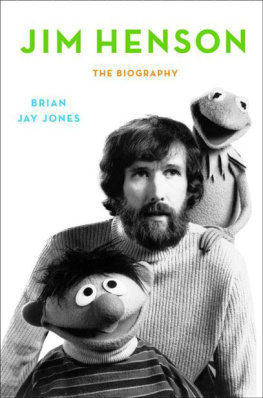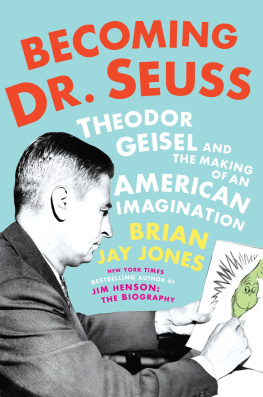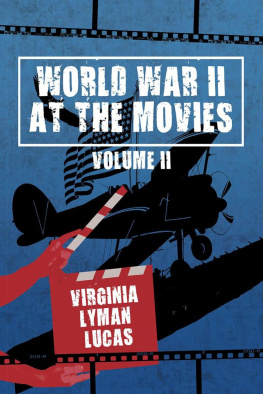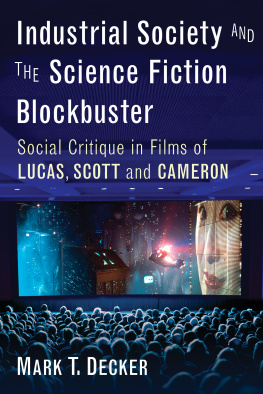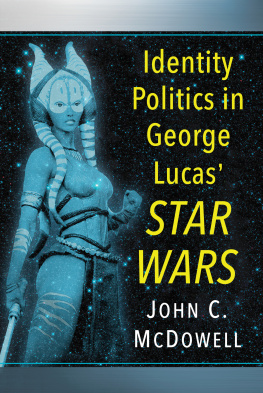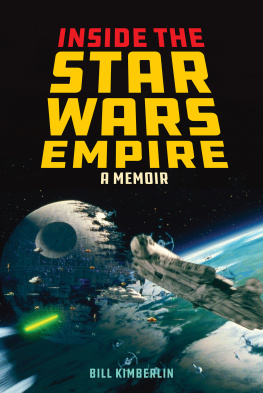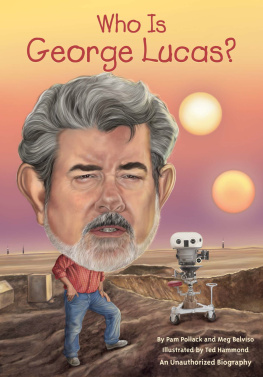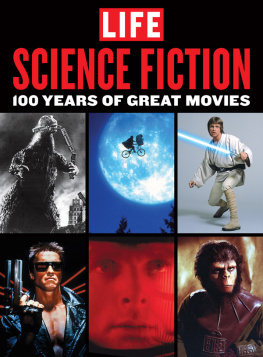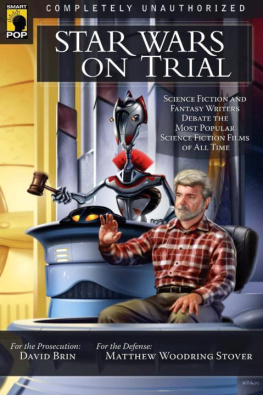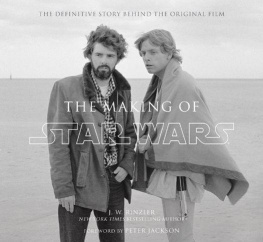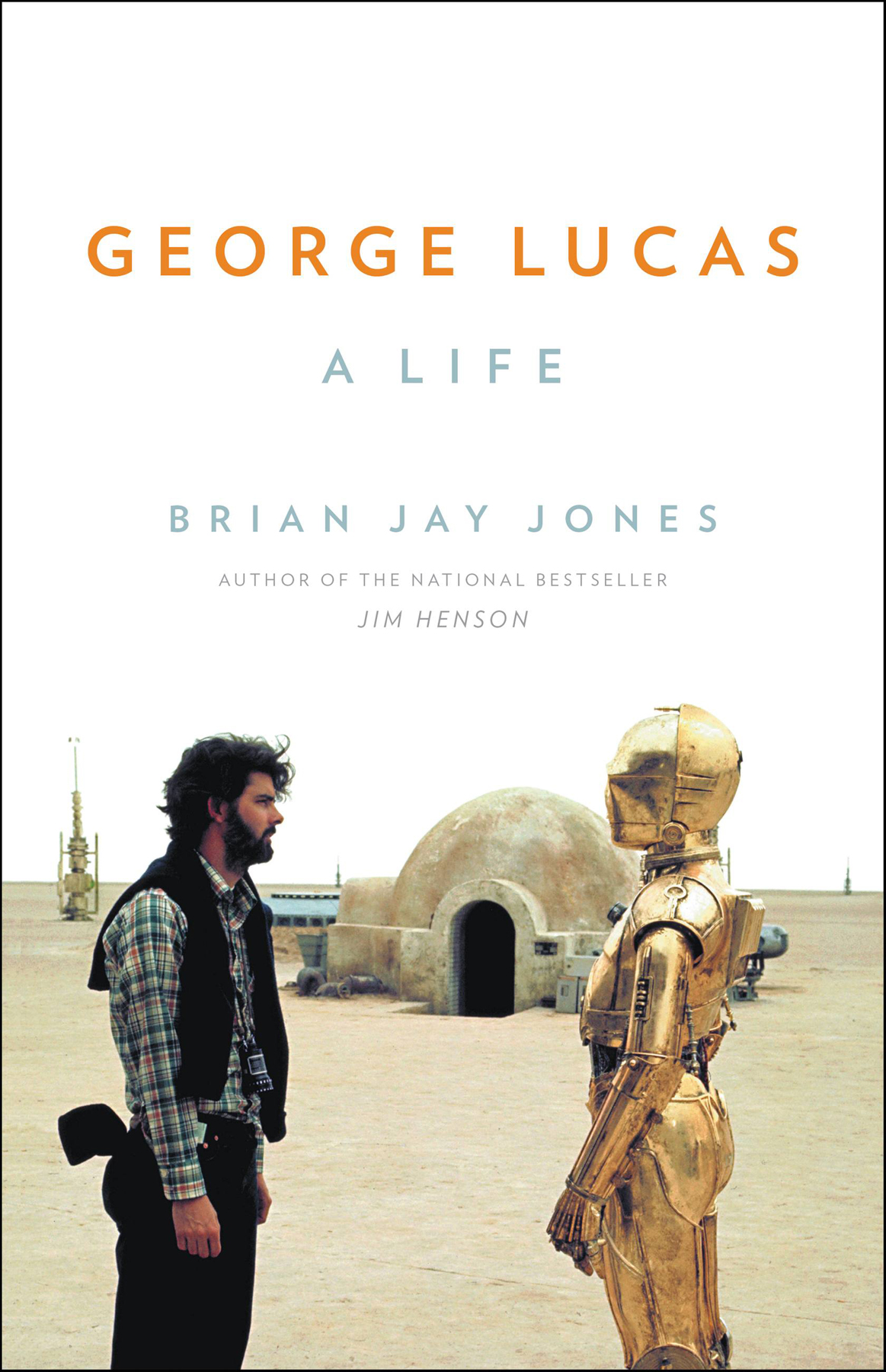R 2-D2 refused to work.
It wasnt stubbornness on the part of the droida trait that would endear the character to millions of Star Wars fans around the world. Rather, as the first day of filming began on Star Wars in the Tunisian desert on the morning of March 22, 1976, R2-D2 wouldnt work. His batteries were already dead.
The little droid wasnt the only one with a problem. Several other robots, operated via remote control by crew members standing just out of sight of the movie camera, were also malfunctioning. Some fell over, others never moved at all, while still others had their signals scrambled by Arabic radio broadcasts bouncing off the desert floor, sending them careening wildly out of control across the sand or crashing into one another. The robots would go bananas, bumping into each other, falling down, breaking, said Mark Hamill, the sun-washed twenty-four-year-old actor playing hero Luke Skywalker. It took hours to get them set up again.
The movies director, a brooding, bearded thirty-one-year-old Californian named George Lucas, simply waited. If a robot worked properly, even for a moment, Lucas would shoot as much footage of it as he possibly could until the droid sputtered to a stop. Other times, hed have a malfunctioning unit pulled along by invisible wire, until the wire broke or the droid fell over. It didnt matter anyhow; Lucas planned to fix everything in the editing room. It was where he preferred to be anyway, as opposed to squinting through a film camera in the middle of the desert.
It was the first of what would be eighty-four long, excruciating days filming Star Warstwenty days severely over-schedule. And the shoot was a disaster almost from the beginning. I was very depressed about the whole thing, Lucas said.
Lucass misery was due partly to the fact that he felt he had already lost control of his own film. He laid the blame at the feet of parsimonious executives at 20th Century Fox, who had nickel-and-dimed him every step of the way, denying him the money he needed to ensure that everything worked. But the suits at Fox were skeptical; science fiction, they insisted, was a dead genre, and the necessary props, costumes, and special effects were expensive. As far as the studio was concerned, Lucas could get by on a shoestring budget, and simply fix his robot problems as he went along. It was purely a case of Fox not putting up the money until it was too late, seethed Lucas. Every day we would lose an hour or so due to those robots, and we wouldnt have lost that time if wed had another six weeks to finish them and test them and have them working before we started.
It wasnt just the remote-control robots that were giving him trouble. Anthony Daniels, a classically trained, very British actor whod been cast in the role of the protocol droid C-3PO, was miserable inside his ill-fitting, gleaming gold plastic costume, and unable to see or hear much of anything. With every movement he was poked or cutcovered in scars and scratches, he sighedand when he fell over, as he often did, he could only wait for someone on the crew to notice and help him to his feet.
If Star Wars worked out, one thing would have to change for sure: hed control the money.
Still, there were some things hed never control, no matter how much he might wish otherwise. The wildly unpredictable weather in Tunisia, for example, wasnt making production any easier. During the first week of filming, it began raining in Tunisias Nefta Valley for the first time in seven years and didnt stop for four days. Equipment and vehicles bogged down in the mud, requiring assistance from the Tunisian army to pull everything out of the muck. It was often cold in the morning and blazing hot by afternoon, and Lucas would begin most days in his brown coat, hands shoved deep in the pockets as he peered through the eyepiece of the camera; as the sun rose higher in the sky, he would shrug off his coat, put on his sunglasses, and direct his actors in a checked work shirt, with a baseball cap pulled low over his eyes. When it wasnt raining, high winds tore up the sets, ripping apart the sandcrawler and blowing one set, as a crew member put it, halfway to Algeria.
And sand, it seemed, got into everything, stinging eyes, abrading skin, and getting into nearly every crack and crevice. Though Lucas kept his Panavision cameras wrapped in plastic sheeting to prevent any damage from wind and sand, a lens from one camera was still nearly ruined. He was plagued by equipment problems as well as just plain bad luck. A truck caught fire, damaging several robots. When trucks failed, Lucas would move equipment on the backs of donkeys.
By the end of the first two weeks of filming, Lucas was exhausted. With the constant setbacks caused by bad weather, malfunctioning droids, and ill-fitting costumes, he felt hed gotten only about two-thirds of what hed wanted on filmand what he had, he wasnt happy with. It kept getting cut down because of all the drama, said Lucas, and I didnt think itd turned out very well. He was so upset he even skipped a party he hosted himself to mark the end of the Tunisian shoot, shutting himself into his hotel room to wallow in his own misery. I was seriously, seriously depressed at that point, because nothing had gone right, he sighed. Everything was screwed up. I was desperately unhappy.
A little more than a year before it was scheduled to hit theaters, if it ever did, the Star Wars project was a mess, and the movie was going to be terrible.
Lucas was certain of it.


